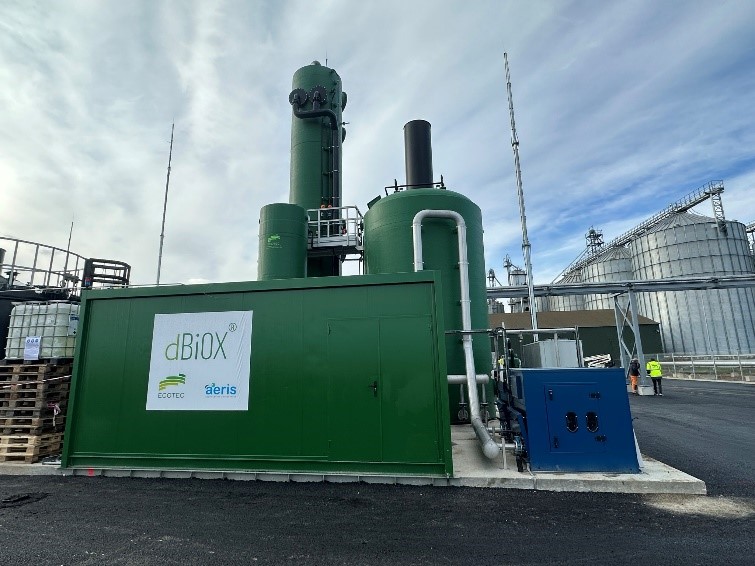Biogas Desulfurization
Biogas Desulfurization
The important advances in the field of biological desulfurization made by the GENOCOV group of the UAB, from which Aeris originates, have allowed the development of two ranges of specific products for the oxidation of hydrogen sulfide in biogas: biotrickling filters and bioscrubbers. The choice of one or the other technology depends on the composition of the biogas to be treated and the subsequent use of this biogas.
—
Biotrickling filters consist of a single reactor in which specific microorganisms (Thiobacillus and others) grow. This reactor simultaneously dissolves hydrogen sulfide into a liquid phase (recirculation water) and biologically oxidizes it to sulfate.
On the other hand, bioscrubbers consist of two separate reactors. In the first one, an absorption tower, hydrogen sulfide gas is transferred to the liquid phase. This liquid phase is then fed to a second reactor, in this case a biological reactor, in which the hydrogen sulfide is oxidized to elemental sulfur.
The principal advantages of these processes are:
- Efficiency > 99%.
- Minimal consumption of chemical reagents
- Durability of filler over 15 years
- Strict control of oxygen supply, eliminating the risk of explosion.
- Minimal maintenance
Biowashers allow obtaining a solution rich in elemental sulfur, with multiple uses in agriculture and industry. Moreover, in these systems the dilution of the biogas is null, so there is no loss of heat capacity.
LATEST NEWS
Discover with the latest news about Biogas Desulfurization




